This Is What Weddings Looked Like 50 Years Ago
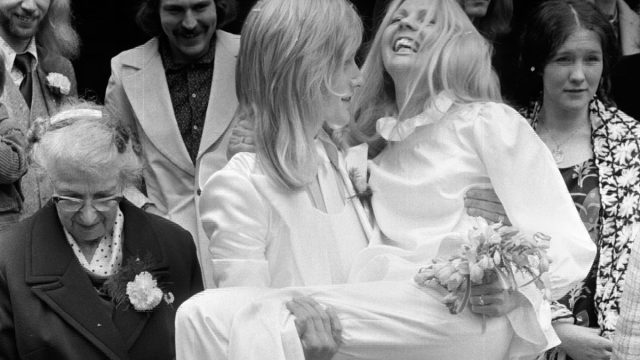
Couples have been tying the knot since time immemorial. But weddings have changed in some pretty significant ways since those early walks down the aisle. In Ancient Greece and Ancient Rome, for instance, wedding celebrations often lasted for several days. And in the Middle Ages, brides carried bouquets of flowers and herbs to cover up their own body odor. Even in the past 50 years, America has seen quite a shift in wedding norms and traditions, moving away from the modest at-home wedding towards the exorbitant world of caterers and rented ballrooms. So, what other wedding traditions have we left in the past? Keep reading to discover what weddings were really like 50 years ago.
For the first half of the 20th century, wedding receptions primarily took place at churches.
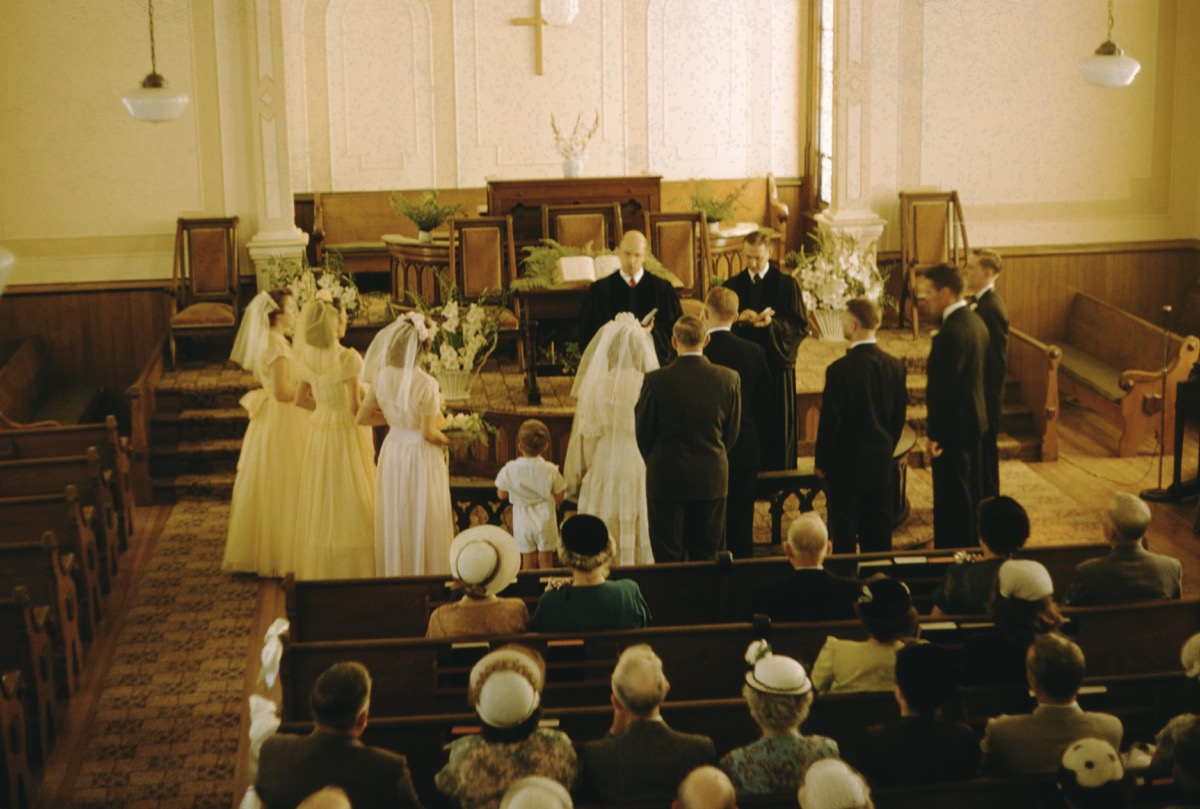
With religion so omnipresent in the 1940s and 1950s, churches were the go-to venues for the era’s weddings.
By the late 1940s, “the etiquette-bound formal wedding performed in a religious setting was the bread and butter of the wedding industry,” explained Vicki Howard in her book Brides, Inc: American Weddings and the Business of Tradition. Such religious rites “were generally elaborate and formal, involving a greater number of guests, attendants, and gifts.”
But some families held their wedding celebrations at home.
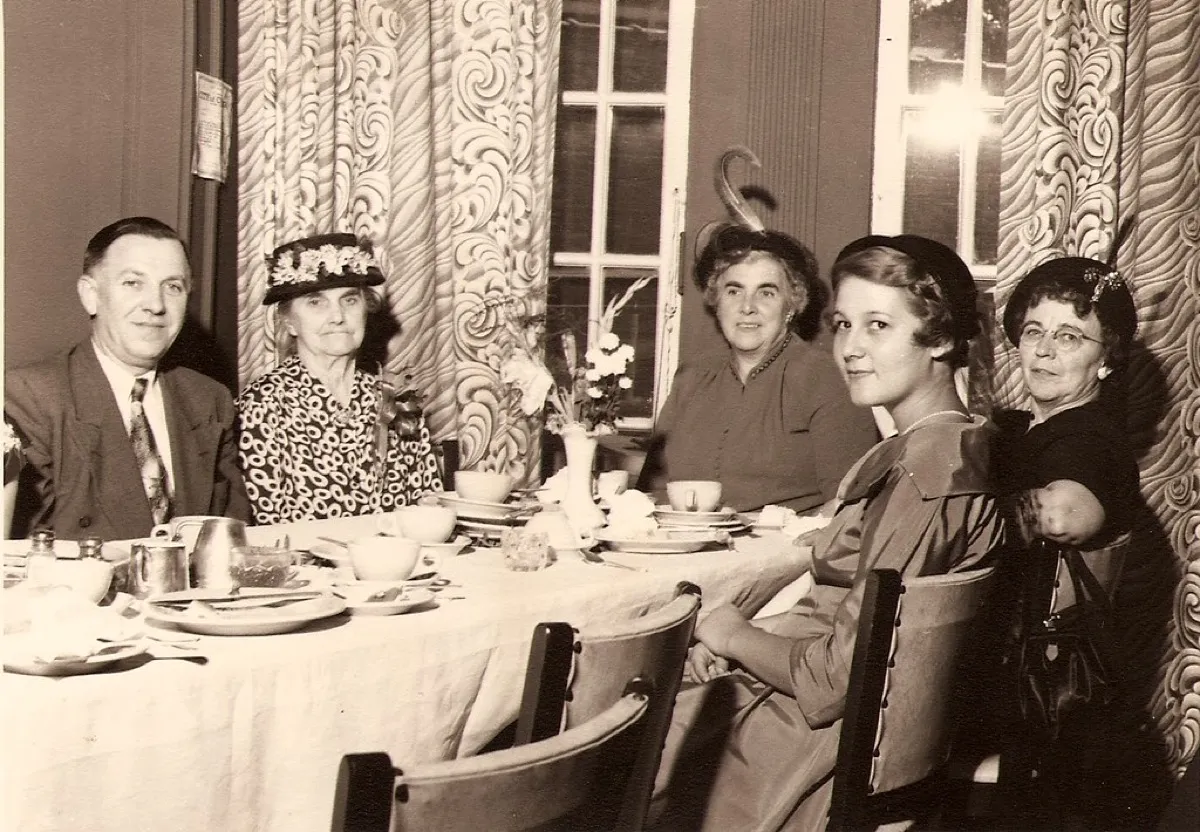
“Taste, religious background, and perhaps restricted finances led to the continued popularity of the home reception, and in some cases, even the home ceremony,” said Howard.
After all, as World War II raged on during the first half of the 1940s, people had little money to spend on food and essentials, let alone over-the-top wedding celebrations.
In the 1950s, weddings became extravagant once again.
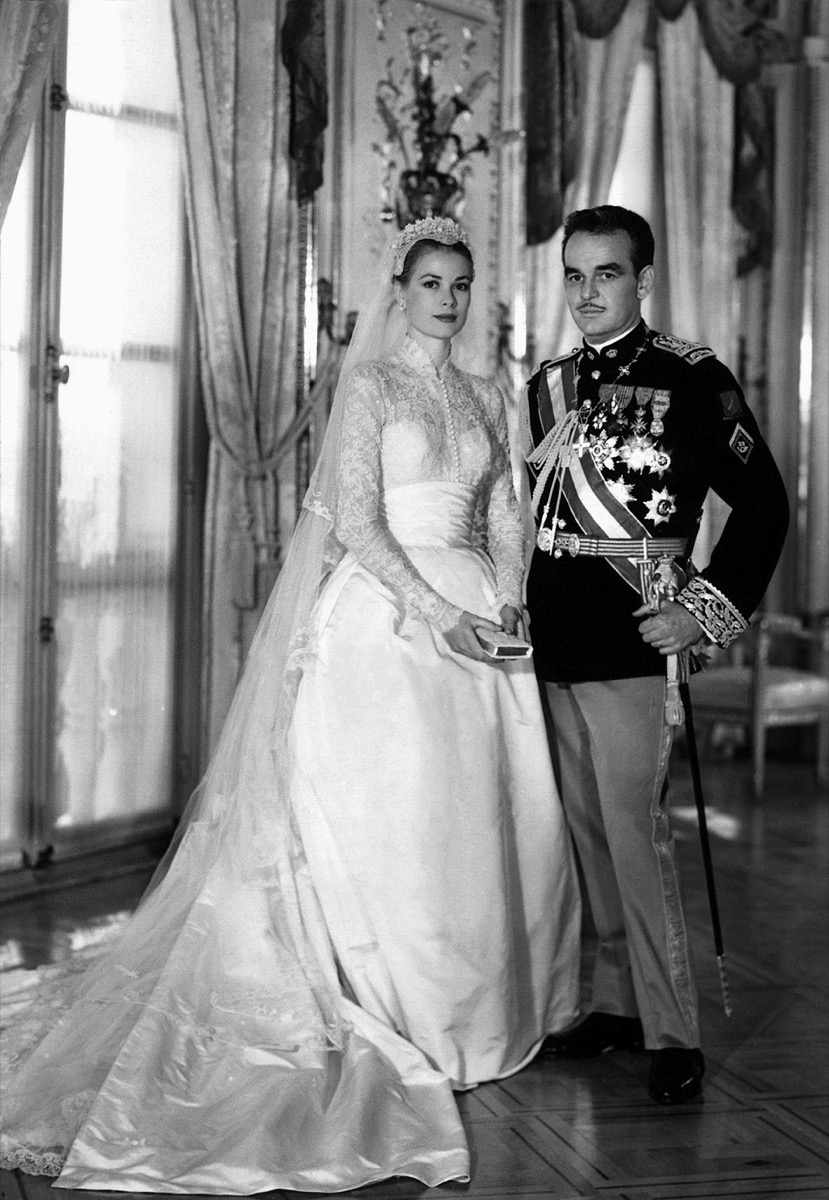
Once World War II ended and the economy returned to normal in the 1950s, brides-to-be—and their families—were more than happy to pay a pretty penny for the perfect wedding reception.
“With the world safe again, the extravagant wedding was reborn, given even more impetus by a blossoming economy and lots of all-too-eligible bachelors looking to settle down,” noted Elizabeth Shimer in The Wedding Gown Book. “Grace Kelly’s much-celebrated wedding to the Prince of Monaco added to the marital fervor. … The glory of weddings was celebrated not only in the press but also in the movies, especially in such films as Father of the Bride [in 1950].”
But by the mid-1960s and ’70s, many weddings reflected the counterculture movement.
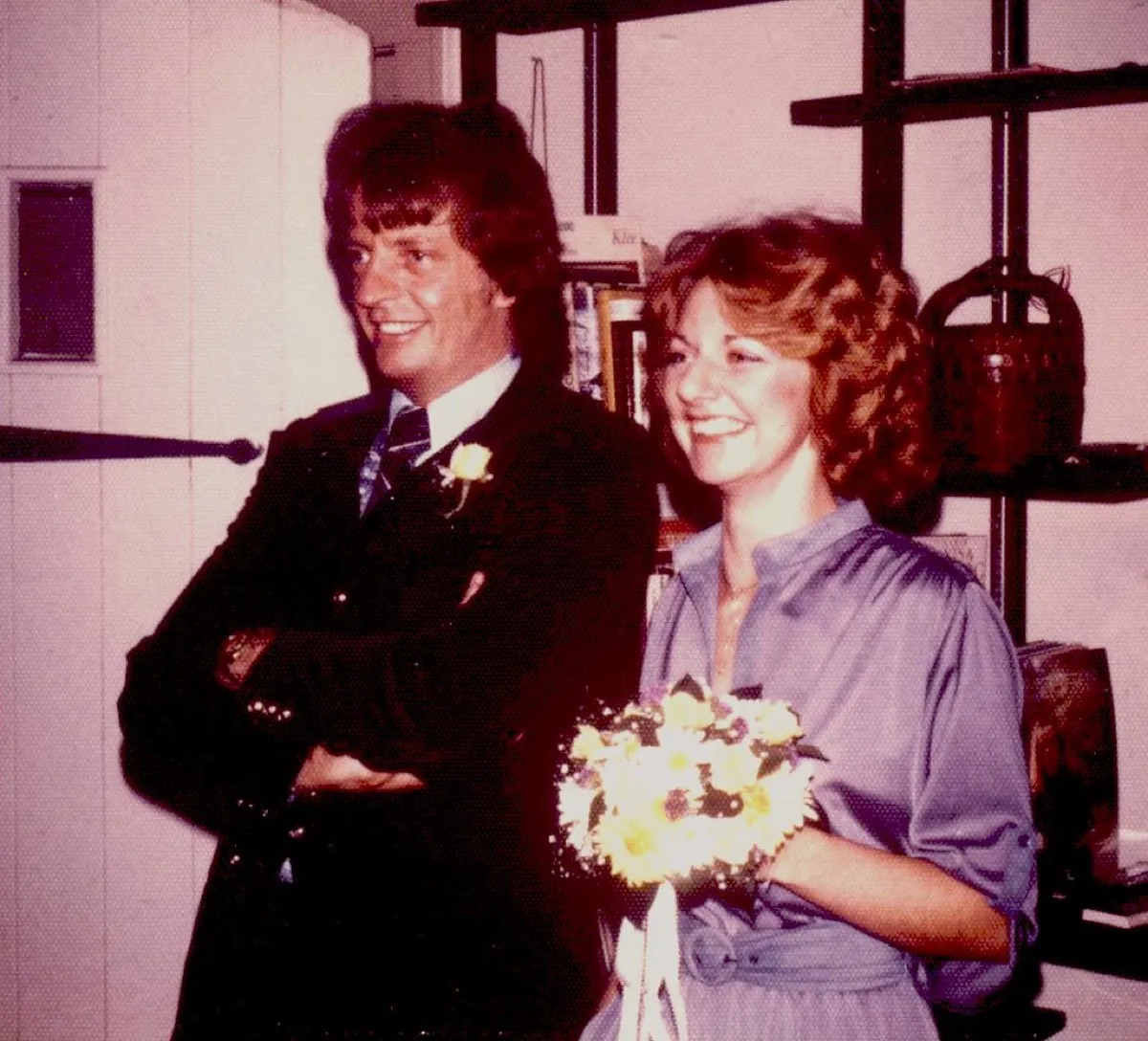
The pushback against social norms that characterized the hippie movement of the 1960s meant that weddings were far less traditional by the end of the decade.
“With resistance to the Vietnam War came a counterculture more interested in cotton peasant dresses and paisley headbands than in frills and lace,” explained Shimer. “Many couples even moved from the churches and cathedrals to the wheat fields and beaches to tie their marital knots.” Even celebrities and political figures during this time, like Hillary Rodham Clinton, were bidding adieu to high heels and frilly frocks and embracing bare feet and understated ceremonies.
And more brides started to reject the traditional wedding gown and veil.
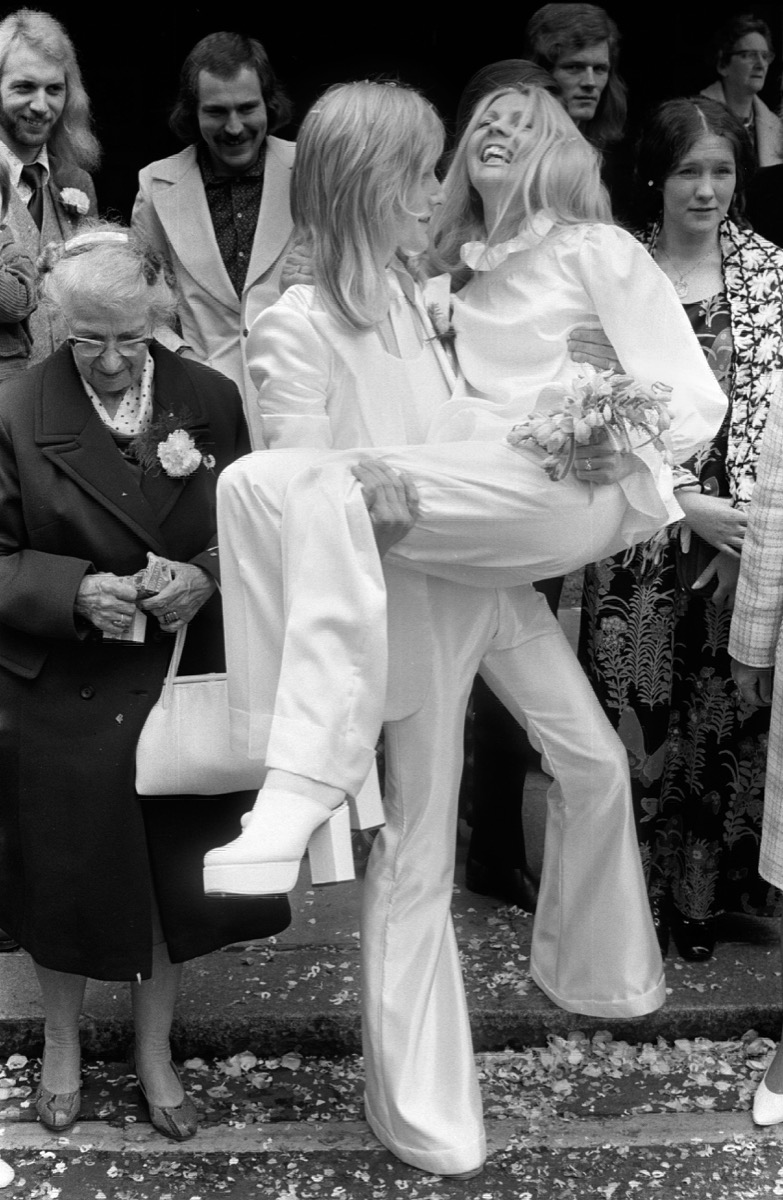
In the ’60s, “the regal white gown and veil” were tossed aside just like traditional venues and ceremonies, as style reporter Ruth La Ferla explained in the New York Times.
Fewer full-length white gowns made their way down the aisle, with brides instead opting for wedding dresses that were shorter, flouncier, and more embellished. Some, like the woman pictured here, even dared to wear pants. “These flourishes, well suited to the wildflower-strewn meadows where so many spoke their vows, remained the indie touchstones for brides throughout the 1970s and have left their maverick stamp on weddings to this day,” La Ferla wrote.
However, the white wedding gown didn’t go away entirely.
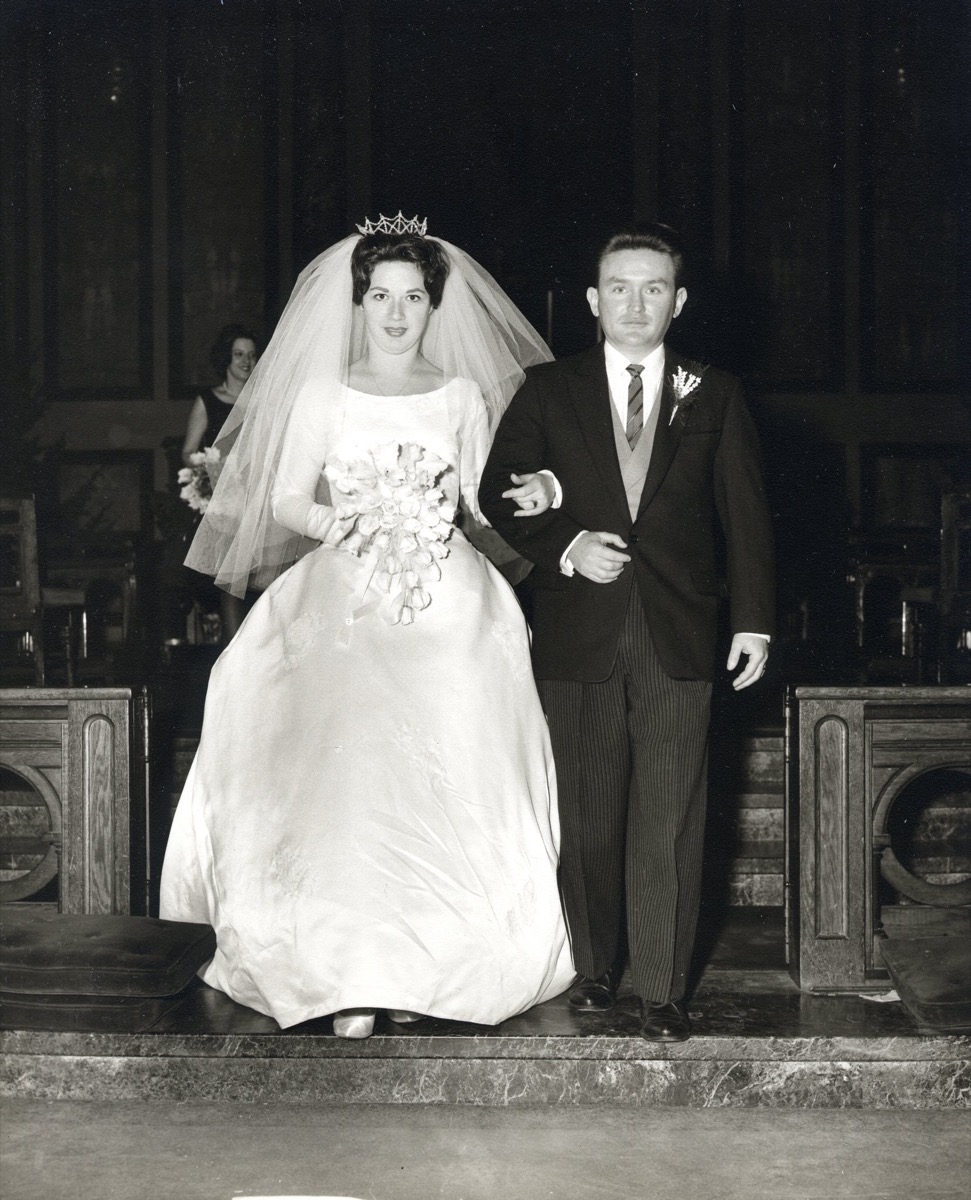
In a certain subset of society—among middle-class suburbanites, specifically—traditional wedding gowns remained popular throughout the ’60s and ’70s.
“In 1968, the majority of 1.5 million first marriages were celebrated with ‘the traditional long white or ivory dress with train and veil, the costume they, or their mothers, had for years dreamed of wearing,'” wrote Howard. The bridal wear industry even saw a 15 to 20 percent increase in sales from 1968 to 1969, “in spite of the rhetoric about the end of tradition,” Howard noted.
Renting your wedding dress was out of the question.
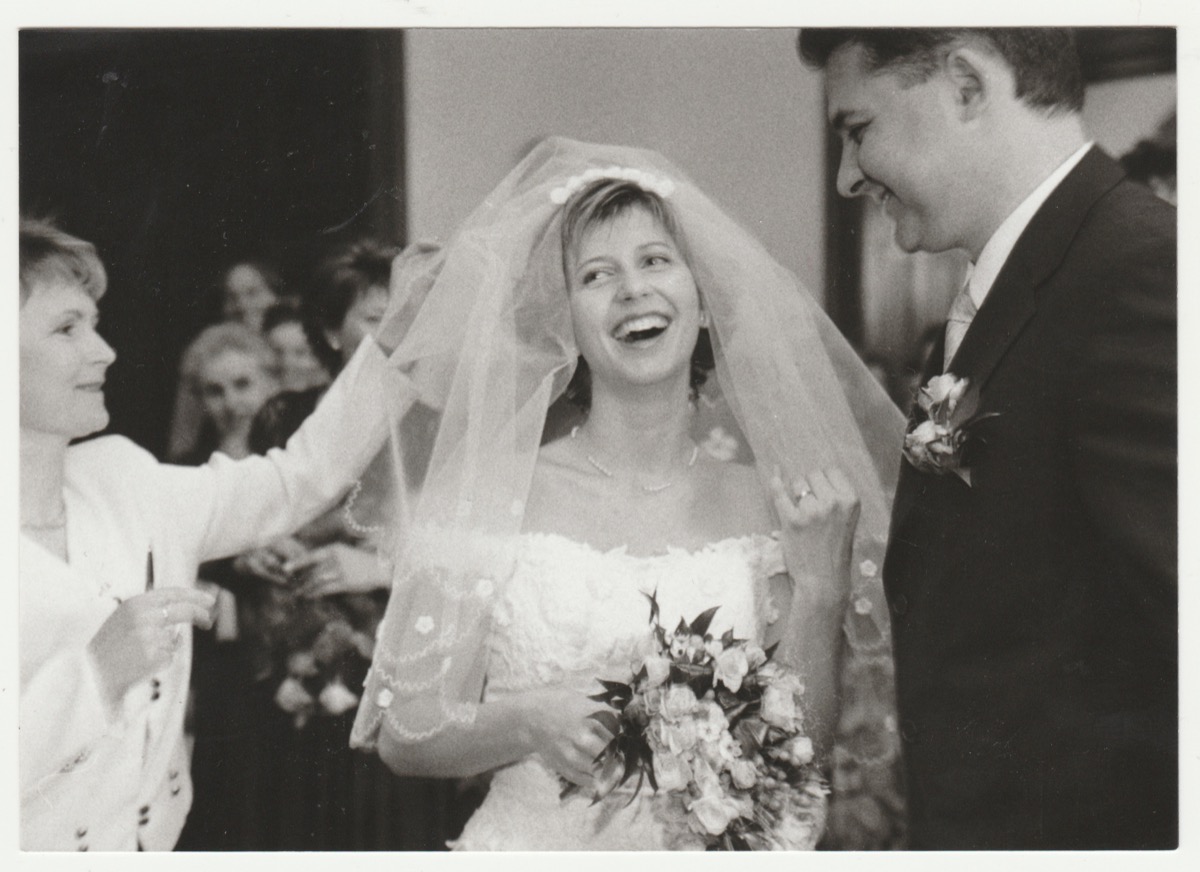
Nowadays, services like Borrowing Magnolia and Rent the Runway make it easy to save money on your big day by renting a wedding gown. And while rental gowns existed 50 years ago, not purchasing your wedding dress was considered something of a fashion faux pas, particularly in the middle- and upper-class communities.
“With the rise of the wedding industry, the once-worn gown came to have a special, ritual significance,” explained Howard. “Worn only for a single day by one person, it preserved the individuality of the bride. Renting a gown that had likely been worn many times before undercut this ritual meaning.”
But men pretty much always rented their tuxes.
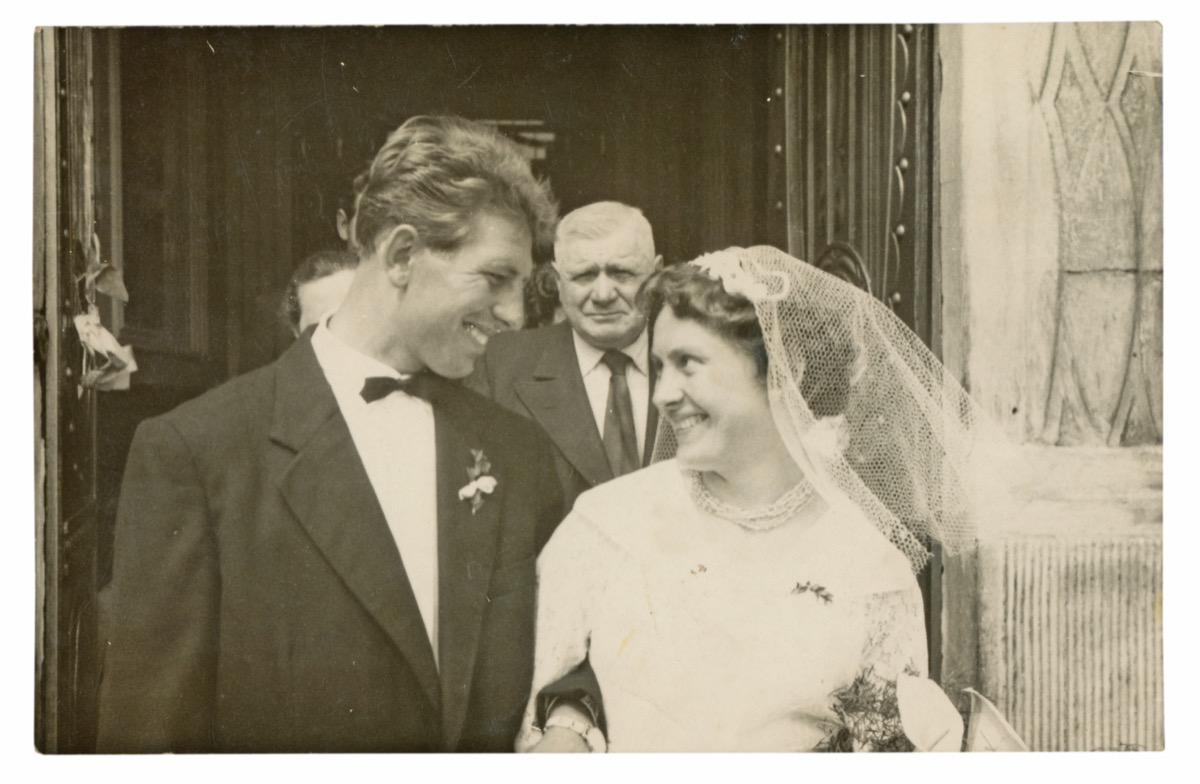
Though women getting married 50 years ago were expected to buy their wedding gowns, men were held to a different—and much more cost effective—standard. “It was acceptable for a groom to rent, but not the bride,” said Howard. “Grooms rented in order to avoid spending money on something they might ‘never use again.'” The formalwear rental business was so big for men that it brought in $400 million in 1979 alone.
The bride’s parents always paid.
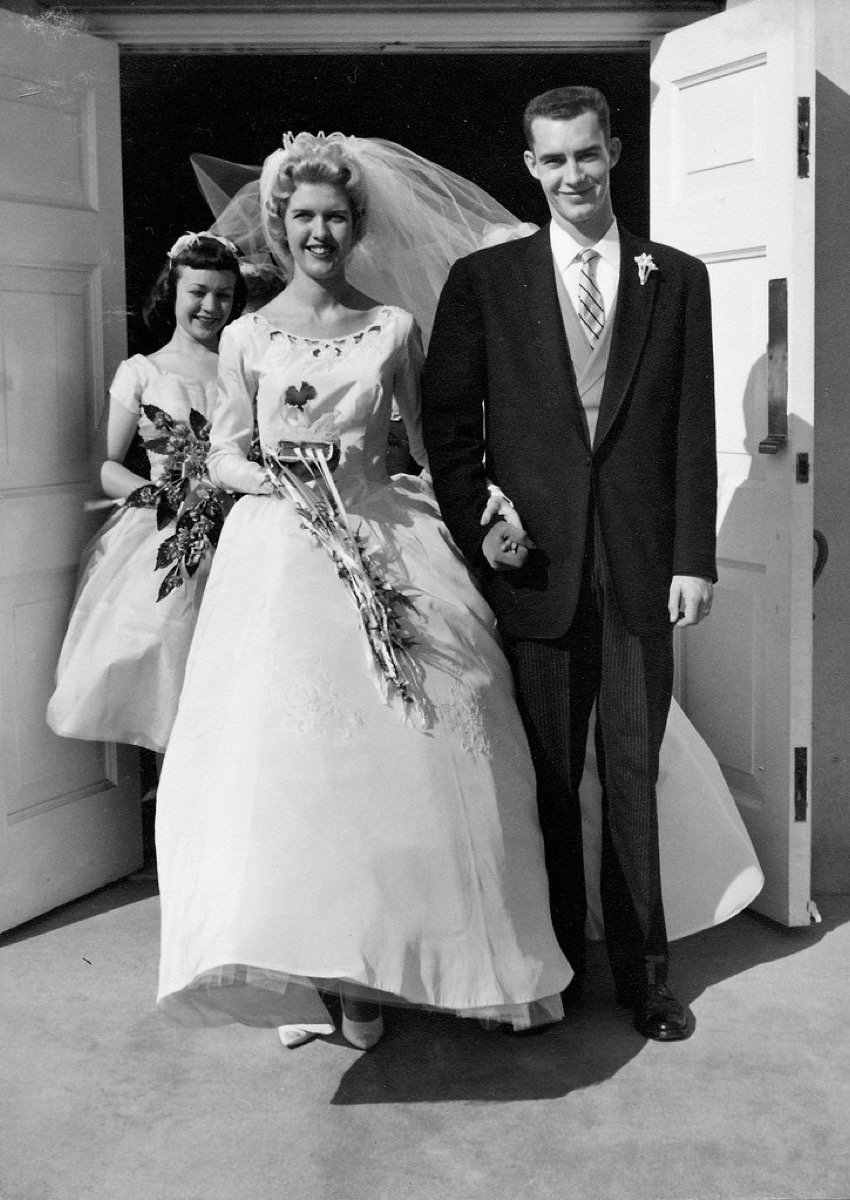
If you had a daughter some 50 years ago, you basically had to start saving up for her wedding as soon as she was born. “It was typical for the bride’s parents to foot the majority of the bill,” as Marilyn Coleman, Lawrence H. Ganong, and Kelly Warzinik explained in their book Family Life in 20th-Century America.
Parents of daughters getting married in the late ’80s and ’90s saw some financial relief, however. By the end of the 20th century, “it became increasingly common… for the bride and groom to pay at least a portion of wedding costs,” they noted.
Wedding cakes were usually tiered, white, and topped with a figurine.
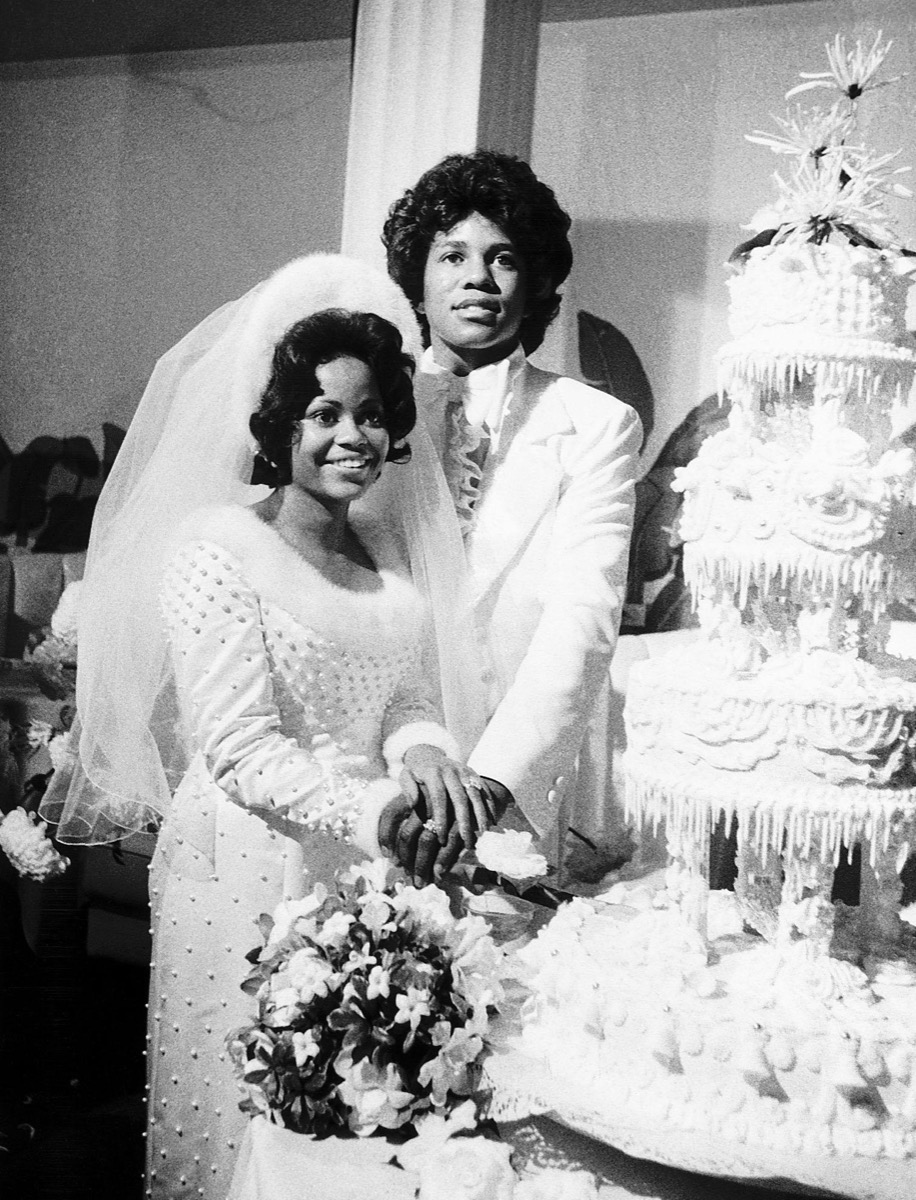
Though wedding cakes in the ’60s and ’70s were outrageously over-the-top, they were pretty predictable in terms of their look. At most wedding receptions, couples would serve a towering, tiered white cake—like the one at Jermaine Jackson’s wedding to his former wife Hazel Gordy in 1973, pictured here.
The cake was often topped with bride and groom figurines and traditionally covered in royal icing, thanks to its stability.
Bridesmaids 50 years ago were hard to miss in their brightly-colored dresses.

“By the early ’70s, the mod scene brought vibrant colors to the wedding party, and it wasn’t uncommon to see ladies in lime green, bright pink, and lemon yellow heading up the aisle,” wrote Shimer. Just as everyday wear during this time incorporated bold hues and towering shoes, wedding boutiques were similarly full of colorful dresses and platforms.
Budgets—and dresses—were big in the ’80s.
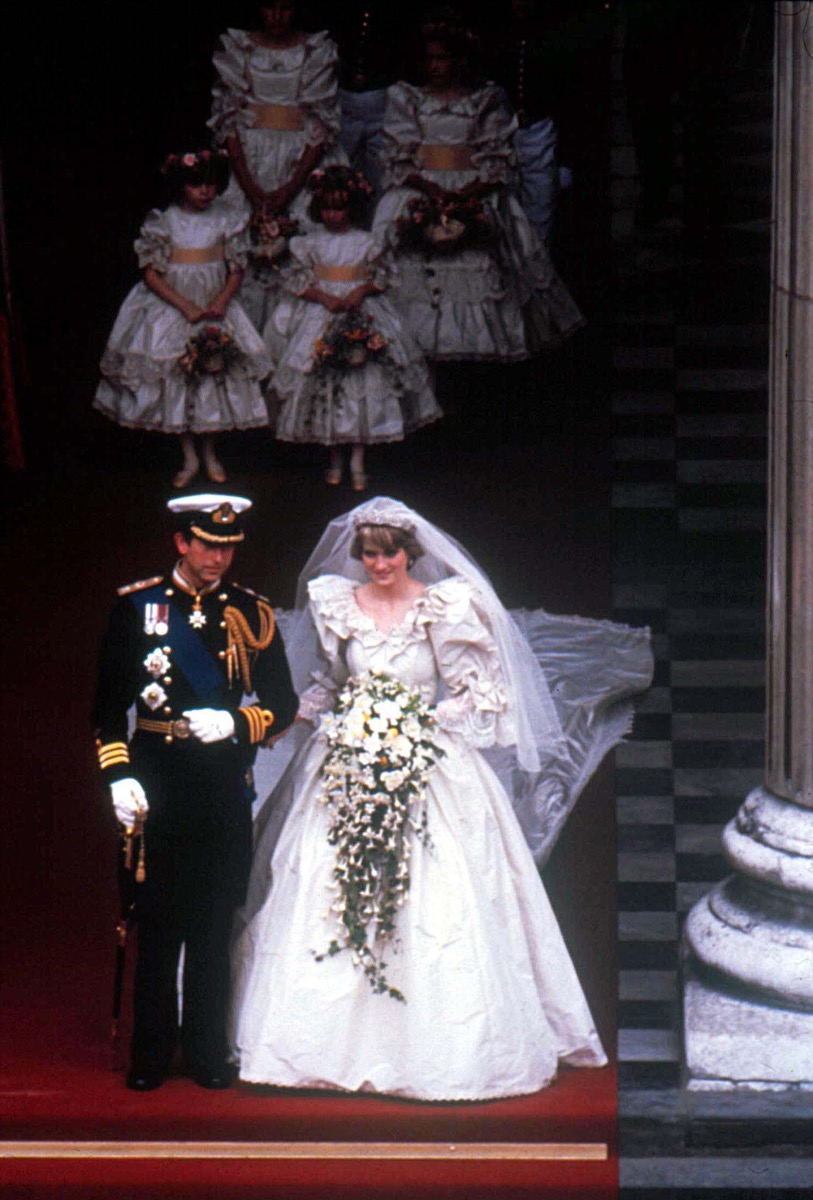
Weddings in the 1980s were in line with the rest of the “era of excess.” They held nothing—and we mean nothing—back. Between the puffy, balloon-sleeved dresses and the expensive, over-the-top celebrations, weddings in the ’80s were just as much about optics as the union itself.
The 1980s’ most notable wedding was that of Princess Diana and Prince Charles, and it exemplified these opulent trends well. “Despite being just 19, Diana was adorned in the most mature of riches, including antique lace, bows, sequins, and thousands of pearls—a style that influenced weddings even in middle America for at least the next 10 years,” wrote Shimer.
“Natural outdoor settings” were popular honeymoon destinations.
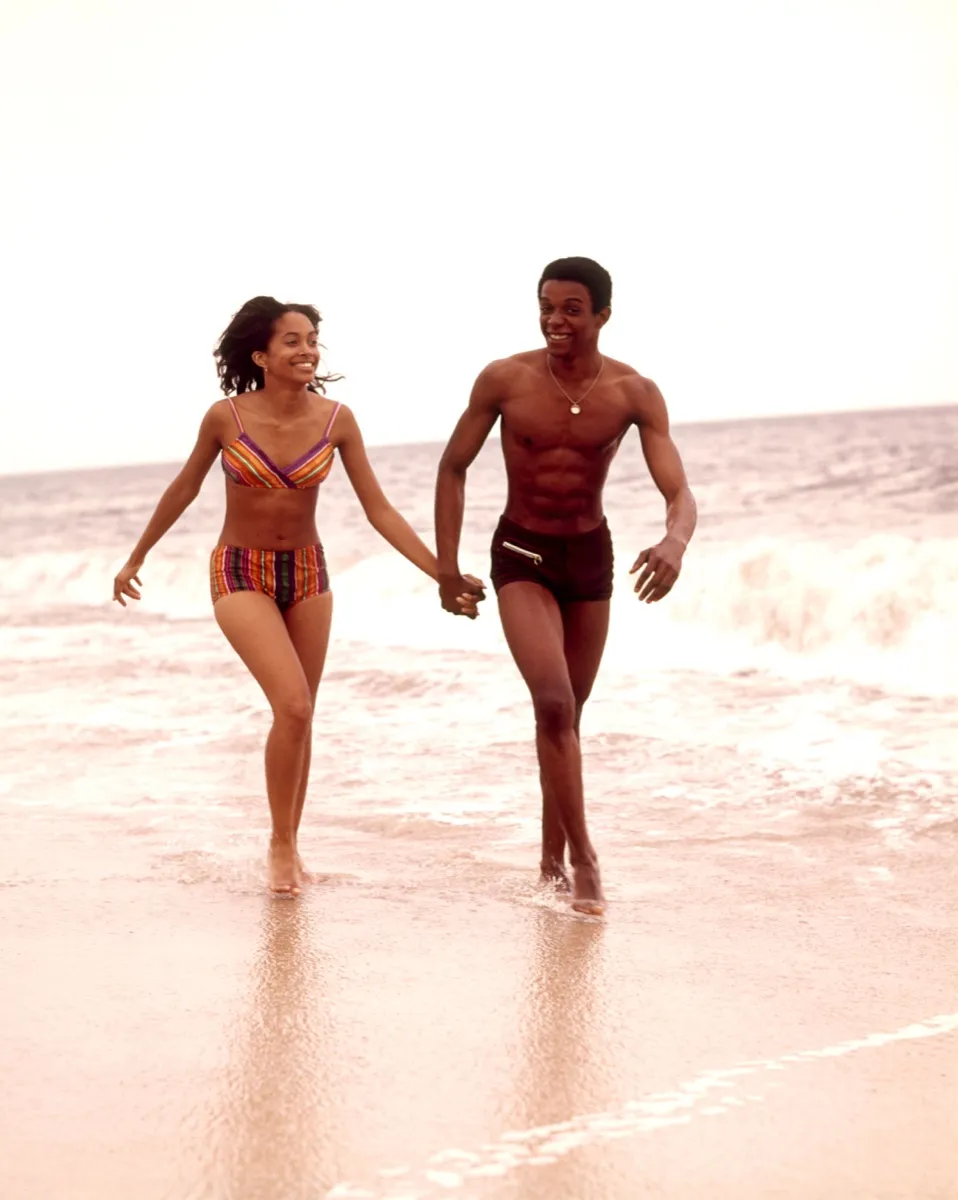
“In the early 20th century, middle-class couples joined their upper-class counterparts in taking wedding trips,” according to Family Life in 20th-Century America.
However, it wasn’t until the 1990s that European getaways and other “far-flung destinations” became popular. For most of the century, the book notes, “natural outdoor settings tended to be the most popular honeymoon sites, including destinations such as Niagara Falls and the Pocono Mountains.” And if you’re looking to plan a vacation of your own, check out these 50 Destinations So Magical You Won’t Believe They’re in the U.S.
To discover more amazing secrets about living your best life, click here to follow us on Instagram!